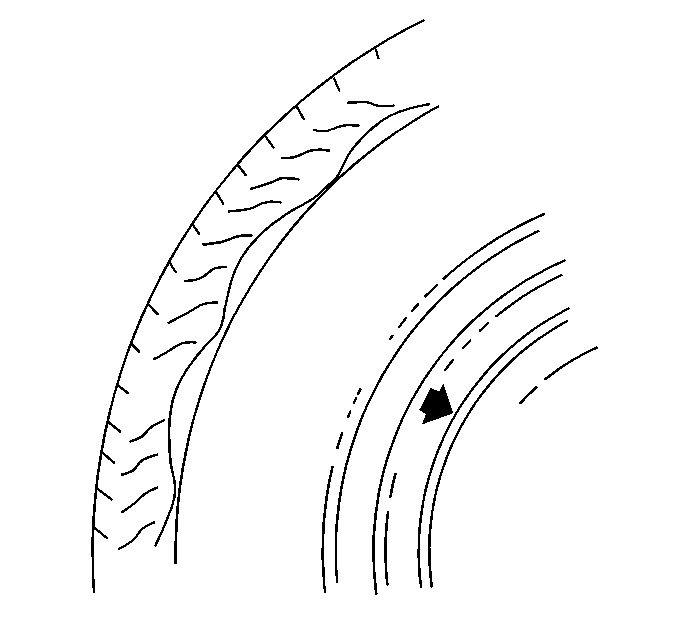
Use a tire changing machine in order to mount or dismount tires. Follow the equipment manufacturer's instructions. Do not use hand tools or tire irons to change the tire as they may damage the tire beads, wheel rim or flanges.
Notice: Damage to either the tire bead or the wheel mounting holes can result from the use of improper wheel attachment or tire mounting procedures. It takes up to 70 seconds for all of the air to completely exhaust from a large tire. Failure to follow the proper procedures could cause the tire changer to put enough force on the tire to bend the wheel at the mounting surface. Such damage may result in vibration and/or shimmy, and under severe usage lead to wheel cracking.
Important: Do not lubricate the tire beads or wheel rim with the lubricant containing silicone. Silicone will allow the tire to rotate on the wheel rim, throwing the tire and wheel out of balance.
Clean the rim bead seats with a wire brush or a coarse steel wool to remove old rubber and light rust or corrosion. Before mounting or dismounting a tire, the bead area should be well-lubricated with GM P/N 9985555 (50% lubricant and 50% water) or equivalent.
Caution: To avoid serious personal injury, do not stand over tire when inflating. The bead may break when the bead snaps over the safety hump. Do not exceed 220 kPa (32 psi) pressure when inflating any tire if beads are not seated. If 220 kPa (32 psi) pressure will not seat the beads, deflate, relubricate the beads and reinflate. Overinflation may cause the bead to break and cause serious personal injury.
After mounting the tire, inflate the tire so that the beads are completely seated. Never exceed 280 kPa (40 psi).
Important: When mounting blackwall tires, be sure that the TPC specification number faces the outboard side of the vehicle.
Install the valve stem and inflate the tire to the pressure specified on the tire placard. Inspect the locating rings of the tire in order to determine that the rings show around the rim flanges on both sides of the wheel.